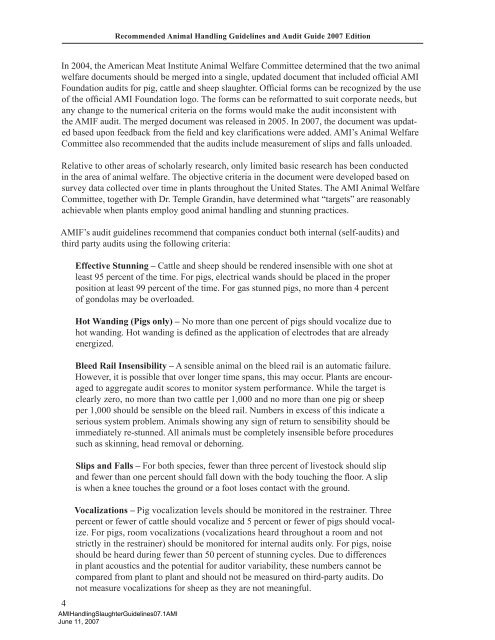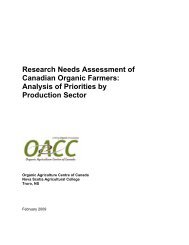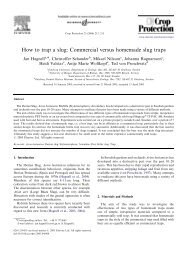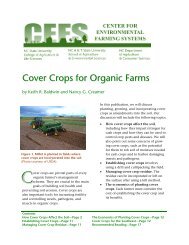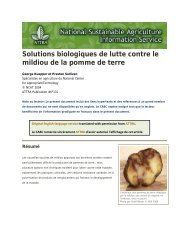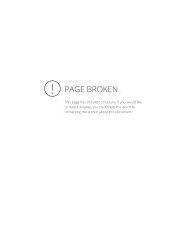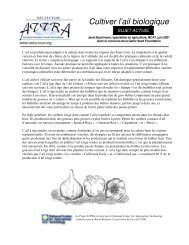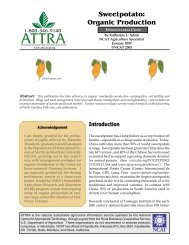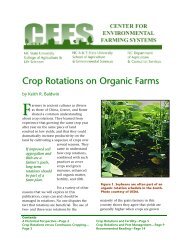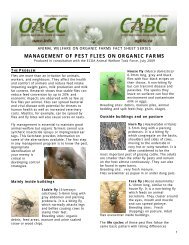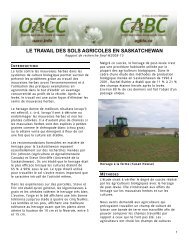Recommended Animal Handling Guidelines and Audit Guide
Recommended Animal Handling Guidelines and Audit Guide
Recommended Animal Handling Guidelines and Audit Guide
- No tags were found...
Create successful ePaper yourself
Turn your PDF publications into a flip-book with our unique Google optimized e-Paper software.
<strong>Recommended</strong> <strong>Animal</strong> <strong>H<strong>and</strong>ling</strong> <strong><strong>Guide</strong>lines</strong> <strong>and</strong> <strong>Audit</strong> <strong>Guide</strong> 2007 EditionIn 2004, the American Meat Institute <strong>Animal</strong> Welfare Committee determined that the two animalwelfare documents should be merged into a single, updated document that included official AMIFoundation audits for pig, cattle <strong>and</strong> sheep slaughter. Official forms can be recognized by the useof the official AMI Foundation logo. The forms can be reformatted to suit corporate needs, butany change to the numerical criteria on the forms would make the audit inconsistent withthe AMIF audit. The merged document was released in 2005. In 2007, the document was updatedbased upon feedback from the field <strong>and</strong> key clarifications were added. AMI’s <strong>Animal</strong> WelfareCommittee also recommended that the audits include measurement of slips <strong>and</strong> falls unloaded.Relative to other areas of scholarly research, only limited basic research has been conductedin the area of animal welfare. The objective criteria in the document were developed based onsurvey data collected over time in plants throughout the United States. The AMI <strong>Animal</strong> WelfareCommittee, together with Dr. Temple Gr<strong>and</strong>in, have determined what “targets” are reasonablyachievable when plants employ good animal h<strong>and</strong>ling <strong>and</strong> stunning practices.AMIF’s audit guidelines recommend that companies conduct both internal (self-audits) <strong>and</strong>third party audits using the following criteria:Effective Stunning – Cattle <strong>and</strong> sheep should be rendered insensible with one shot atleast 95 percent of the time. For pigs, electrical w<strong>and</strong>s should be placed in the properposition at least 99 percent of the time. For gas stunned pigs, no more than 4 percentof gondolas may be overloaded.Hot W<strong>and</strong>ing (Pigs only) – No more than one percent of pigs should vocalize due tohot w<strong>and</strong>ing. Hot w<strong>and</strong>ing is defined as the application of electrodes that are alreadyenergized.Bleed Rail Insensibility – A sensible animal on the bleed rail is an automatic failure.However, it is possible that over longer time spans, this may occur. Plants are encouragedto aggregate audit scores to monitor system performance. While the target isclearly zero, no more than two cattle per 1,000 <strong>and</strong> no more than one pig or sheepper 1,000 should be sensible on the bleed rail. Numbers in excess of this indicate aserious system problem. <strong>Animal</strong>s showing any sign of return to sensibility should beimmediately re-stunned. All animals must be completely insensible before proceduressuch as skinning, head removal or dehorning.Slips <strong>and</strong> Falls – For both species, fewer than three percent of livestock should slip<strong>and</strong> fewer than one percent should fall down with the body touching the floor. A slipis when a knee touches the ground or a foot loses contact with the ground.Vocalizations – Pig vocalization levels should be monitored in the restrainer. Threepercent or fewer of cattle should vocalize <strong>and</strong> 5 percent or fewer of pigs should vocalize.For pigs, room vocalizations (vocalizations heard throughout a room <strong>and</strong> notstrictly in the restrainer) should be monitored for internal audits only. For pigs, noiseshould be heard during fewer than 50 percent of stunning cycles. Due to differencesin plant acoustics <strong>and</strong> the potential for auditor variability, these numbers cannot becompared from plant to plant <strong>and</strong> should not be measured on third-party audits. Donot measure vocalizations for sheep as they are not meaningful.AMI<strong>H<strong>and</strong>ling</strong>Slaughter<strong><strong>Guide</strong>lines</strong>07.1AMIJune 11, 2007


